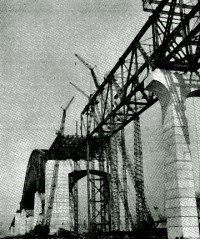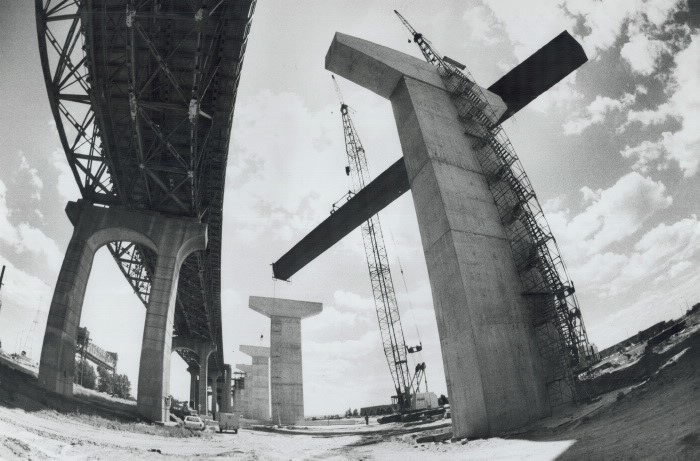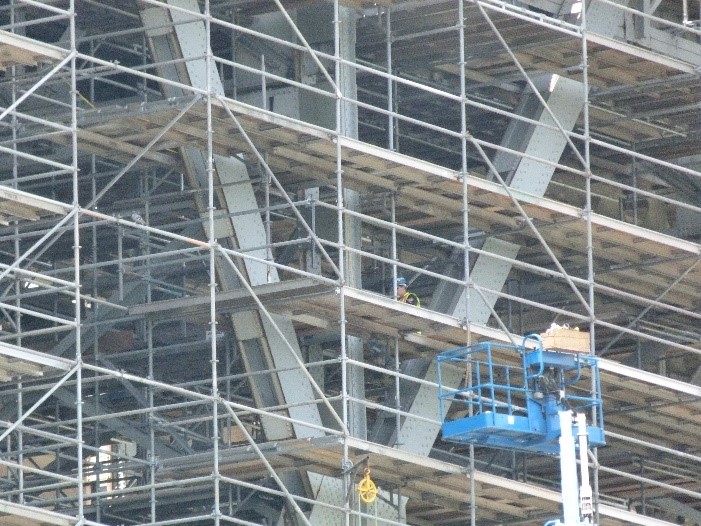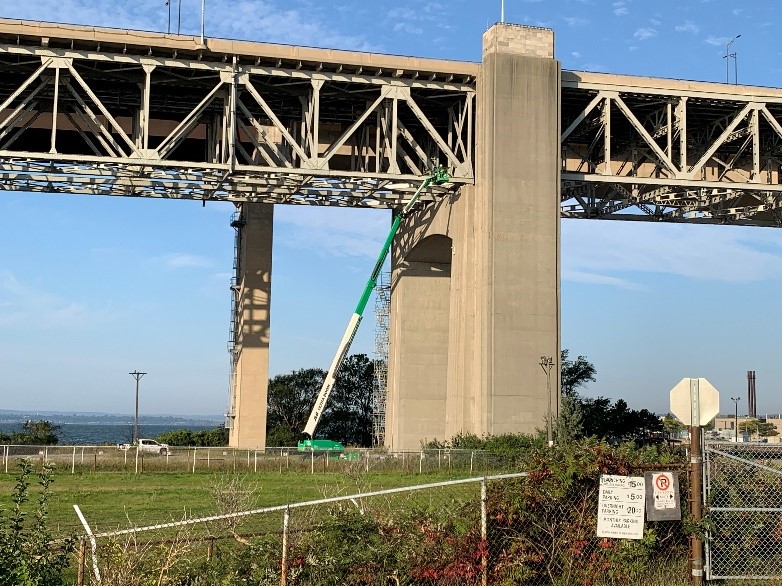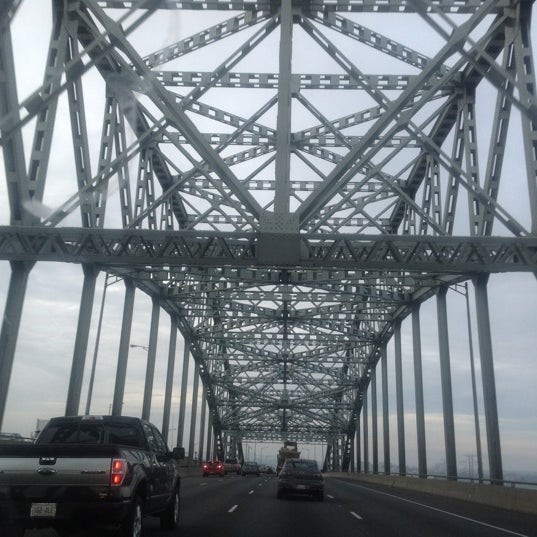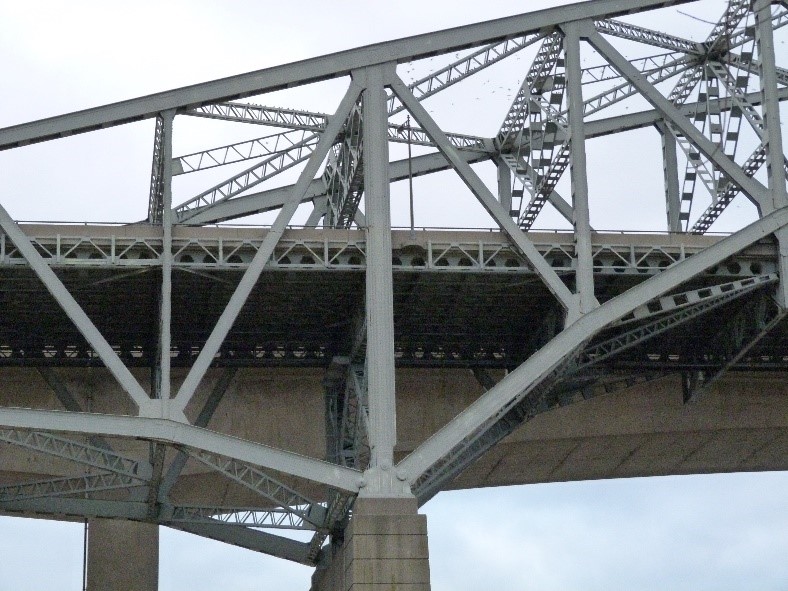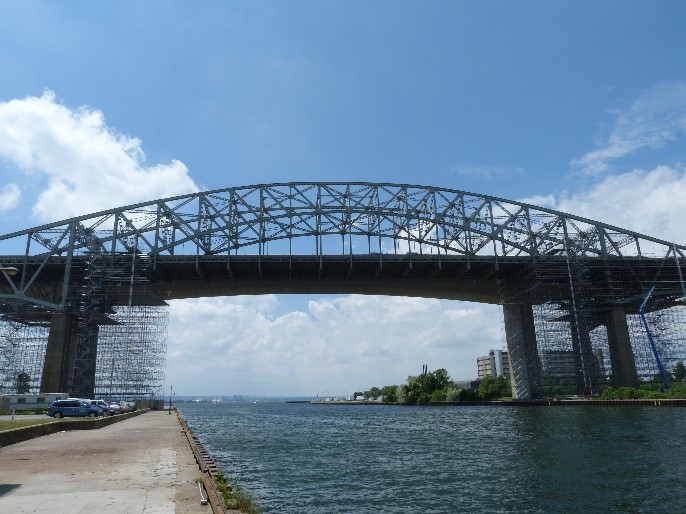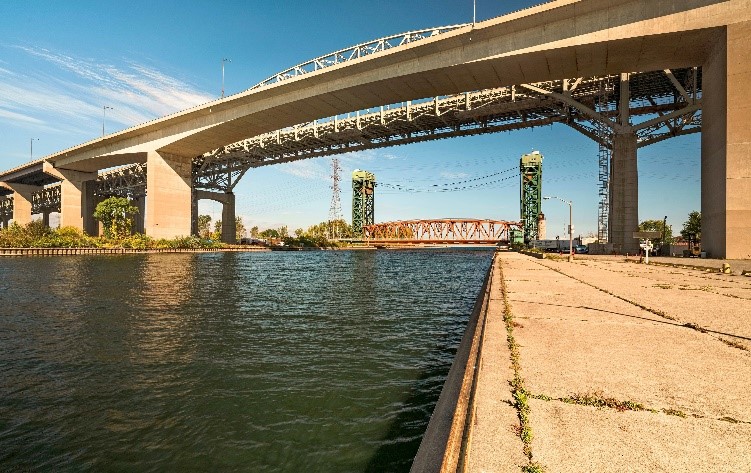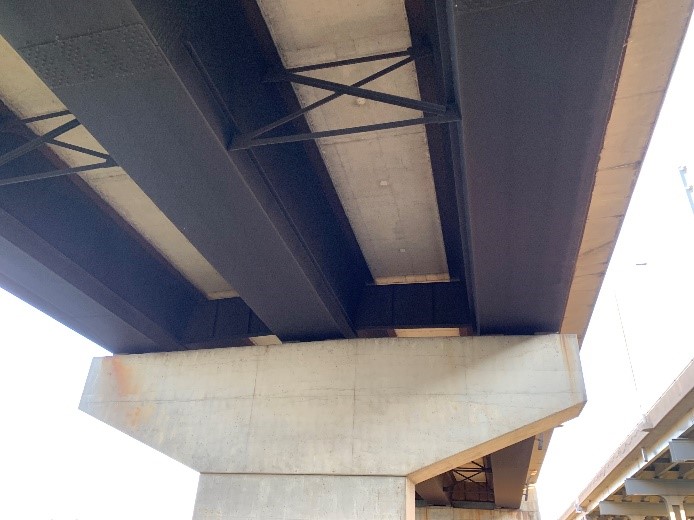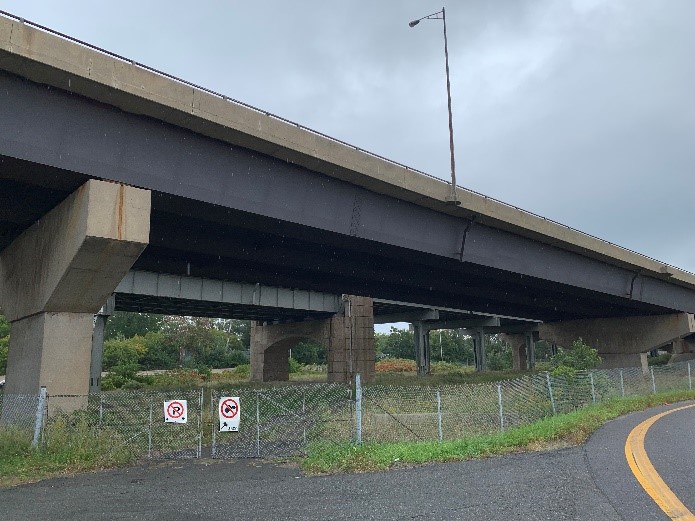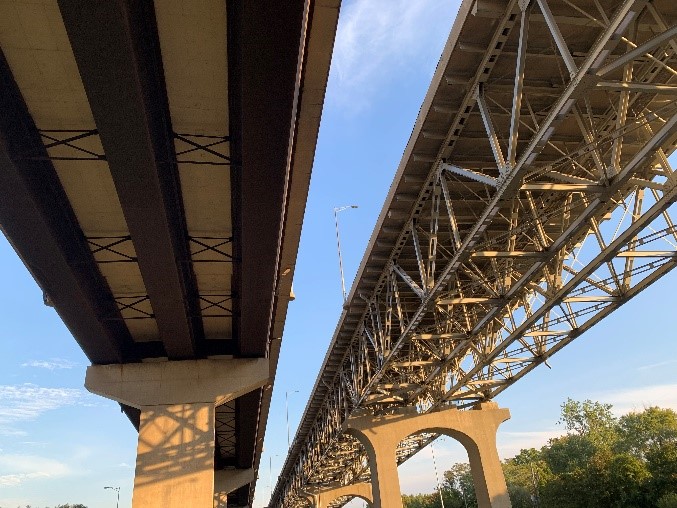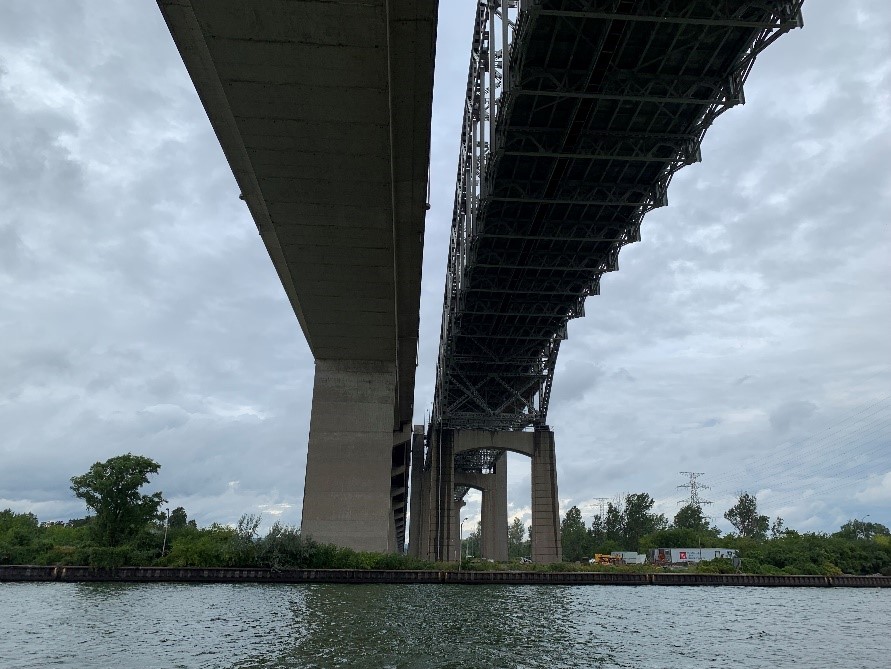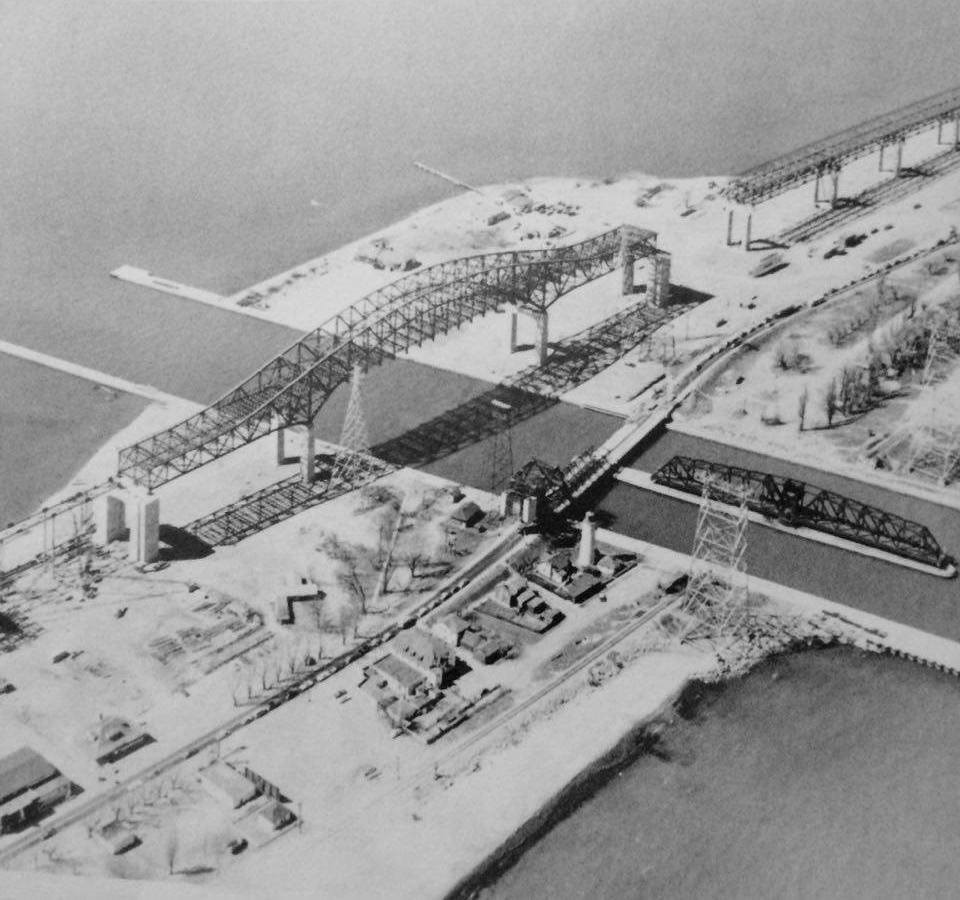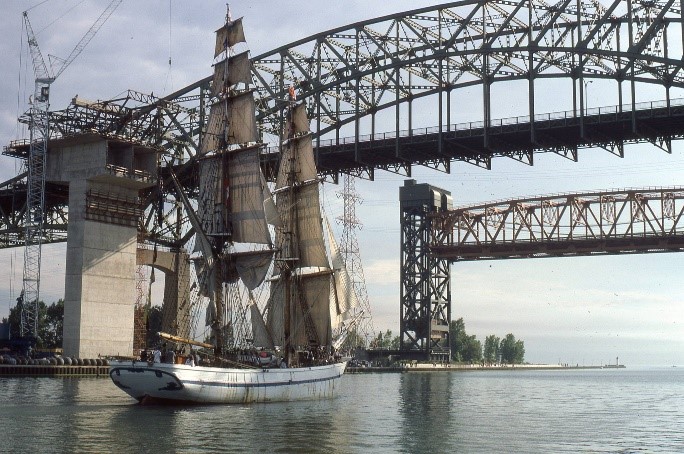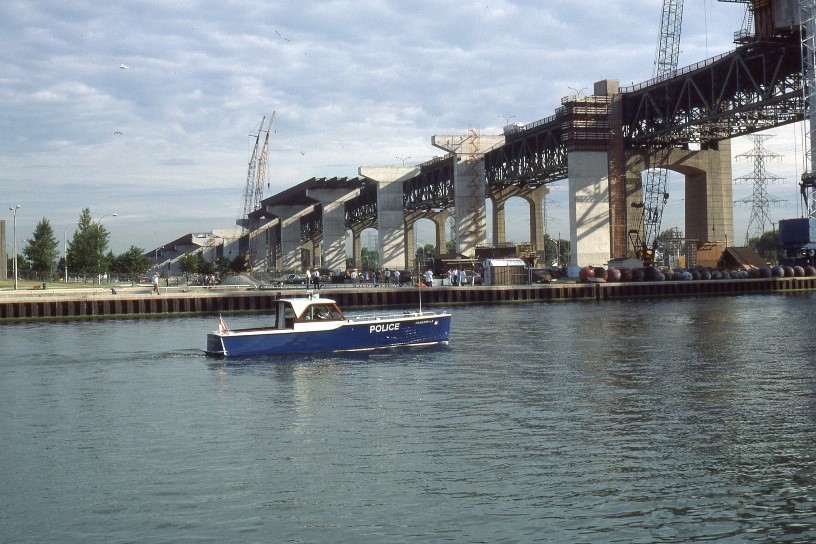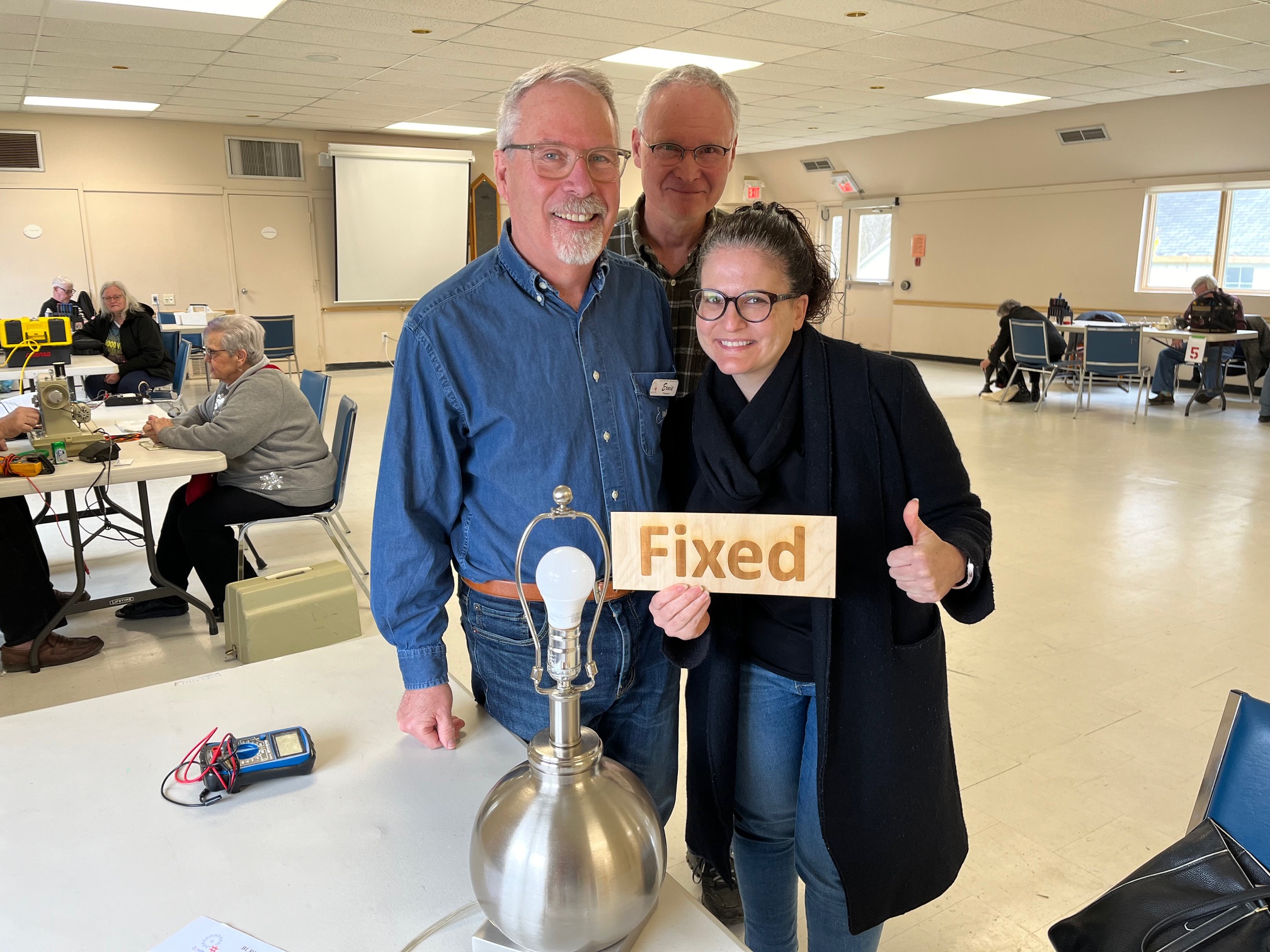The Burlington Skyway Bridges carry the QEW highway over the Burlington Canal, overlooking the expansive Lake Ontario to the east and the industrial Hamilton Harbour to the west. These bridges are formally known as the James N. Allan Skyway Bridge in honour of the minister of highways in the 1950s (I have yet to hear anyone call them that); each of them is fascinating in their own way.
If you’ve ever wondered why these two bridges in the same location serving the same function are vastly different, the reason is simple: they were built 27 years apart. The first, the Arch Bridge, opened in 1958. It is 2560 m long and was a toll bridge for 15 years. The second, the Twin Bridge, opened in 1985 to address increases in traffic by doubling capacity. The decades in between, although few, were a time of great innovation in the world of bridge building.
Innovations in design, materials, and construction methods made possible the building of the Twin Bridge safer, quicker, and more durable (see Fig. 1). The piers (vertical towers holding up the bridge) and the spans (horizontal structure between the piers holding up the road) are very different compared to those of the older Arch Bridge.
Infrastructure always needs a solid maintenance plan to ensure longevity. Every piece of the structure is exposed to corrosion and wear-and-tear, so the fewer parts the better (see Fig. 2). When the new bridge was opened, the old bridge was closed for THREE YEARS for a major overhaul mainly due to deterioration — and it was only 27 years old!
Although the Arch Bridge used technology from the preceding century, it was constructed with increased ambition compared to earlier bridges, pushing the limits of that old technology. The Twin Bridge, by contrast, was built with standardization of its components and quicker construction methods — a new approach. The new piers are all the same and there are only two types of spans, whereas the Arch Bridge has over a dozen different pier types and almost every span is different. Tougher to build. Tougher to maintain.
The main span over the canal poses the biggest challenge for the engineers. The old bridge has a beautiful trademark steel arch truss from which to hang the road deck (see Figures 3 and 4). In the new bridge, they used post-tensioned concrete for the main span, which was the first large-scale use of this approach in Ontario. This is where the concrete deck’s capacity is increased by applying tensioning to steel rods in the concrete after it has hardened, compressing everything because concrete is stronger in compression. For a loose analogy, imagine putting rubber bands around a bundle of pencils compressing the pencils together.
Mechanically stabilized earth walls (MSE walls) are commonly used to build up the roadway at the abutments, significantly reducing the length of the bridge. They are made of precast facing panels, each held in place with reinforcing straps that project into the fill under the roadway, making the fill act as one stable block of dirt and making the series of short piers at the ends of the old bridge no longer necessary. In the case of the Twin Bridge, this eliminated over 40 piers compared to the Arch Bridge (31 vs. 73) making it 355 m shorter (see Fig. 5). That’s a major reduction in construction and maintenance costs.
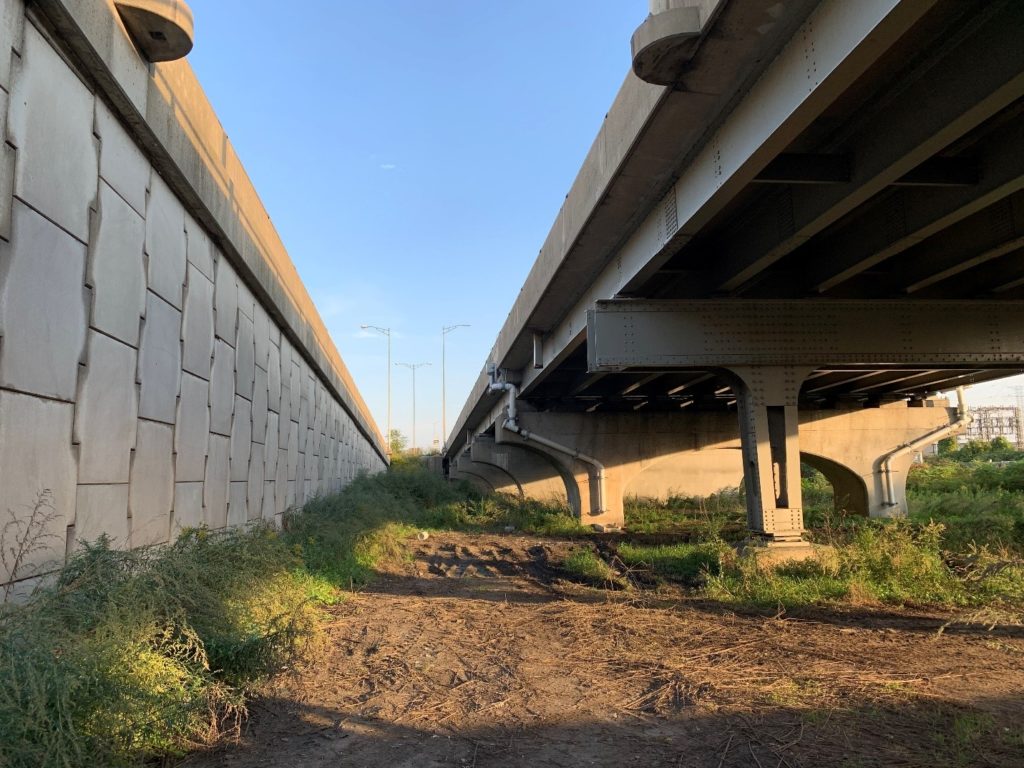
Corten Steel, also known as “weathering steel” because it’s much more resistant to corrosion then its predecessors, was invented in 1933 for railroad cars, but wasn’t fully introduced to the construction industry until the 1970s. This steel was used in the box girders that make up most of the spans in the Twin Bridge (see Fig. 6), and unlike its predecessors, actually lasts longer when NOT painted. It naturally develops a thin layer of rust, giving it its dark brown-red colour that protects it from further corrosion. While older steel bridges need to be painted regularly (sometimes yearly) to reduce corrosion, weathering steel DEMANDS that you leave it alone. Perfect for maintenance!
The Twin Bridge used more “prefabrication” methods, which moved much of the work from high in the air (which is high-risk for workers and slower) to down on the ground (which is low-risk and faster). Rivets, for example, used in structural steel bridges, were already a thing of the past. Instead of riveting hundreds of steel plates together up in the air to make the trusses between piers (see Fig. 8), technology replaced all this with three box girders spanning piers in one shot.
The Twin Bridge was built in two years. Without any actual information on the time it took to build the Arch Bridge, it can safely be assumed that it was built in about twice the time (maybe the readers can help me out with that information?).
Many say that the Arch Bridge is much more beautiful, and the Twin Bridge was just built as inexpensively as possible, both of which may be true. Though I would offer that although the Arch Bridge is a wonderful symbol of industrious history with great architectural appeal, the Twin Bridge’s beauty lies in its simplicity and how it became a showcase of efficiency, innovation, and newer technology in the 1980s. Both bridges carry thousands of vehicles safely over the Burlington Canal every day in their own special way. So, next time you drive over these amazing bridges, keep your hands on the wheel, absorb the scenery, and enjoy the ride!
Sources:
Archives of Ontario. 1986. Twinning the Skyway. Video. Ministry of Transportation and Communications. Url: https://www.youtube.com/watch?v=WJrwoM4AHBk (accessed Oct. 5, 2021).
Historic Bridges. n.d. Burlington Skyway Bridge. Url: https://historicbridges.org/b_a_sresults.php (accessed Oct. 5, 2021).
Sadler, C. 1990. Post-tensioning a Steel Bridge: Strengthening of the Burlington Bay Skyway. Developments in Short and Medium Span Bridge Engineering, Third International Conference on Short and Medium Span Bridges, Toronto, Canada. Abstract from url: trid.trb.org, search term “Burlington Skyway,” (accessed Oct. 5, 2021).


